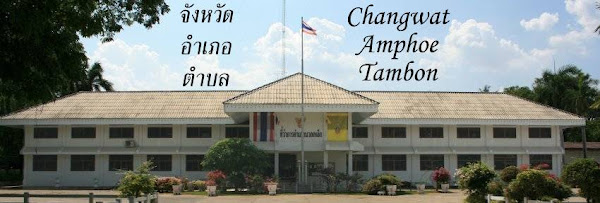
The northernmost district office of Thailand is the one of
Mae Sai district in Chiang Rai province. It is located about 1 kilometer from the boundary control point to Burma (Myanmar) on Thai highway 1. Nearly directly across the street is the municipal office, I already used the photo of that one
earlier.
I noticed the office when we entered Mae Sai. My Thai family just wanted to do shopping in the markets, while I then went to see the temple Wat Phra That Doi Wao and also climbed up the staircase to the viewpoint. When leaving the town, we then stopped shortly so I could do these photos. And luckily there was more to see than just a standard district office building.

Next to the district office is a statue of a historic king or prince. Sadly I haven't written down the words on the statue foundation, so I can only guess how is honored there. One
history of Mae Sai mentions a Phraya Khom Dam (พระยาขอมดำ), leader of Mueang Yom in the 11th century. As I actually cannot read that history yet, the assumption that it is him on that monument is just an "educated guess", as that name is mentioned so often and is the name with the highest title in that history. This figure is also featured in the seal of the
municipality Mae Sai. If someone can translate that history for me - it'd make a great addition to the Wikipedia article on Mae Sai...

Something which caught me by surprise was the fact that there is also a
City Pillar shrine (Lak Mueang) next by. Luckily they placed a small sign there which I noticed when jumping out of the car and walked to the district office. I knew before that there is at least one city pillar in a town which is not a provincial capital, Phra Pradaeng province was abolished in 1932, but of course the pillar stayed. However Mae Sai wasn't a province before, if I'm not totally wrong it wasn't even a Mueang before the province Chiang Rai was formally created in 1910. It'd be interesting to know how comes this town got a city pillar, and when.






